Farmers and Asbestos
Agricultural workers and farmers are exposed to asbestos in farm equipment and building materials. Vermiculite, a mineral that's safe in its pure form, can also pose a risk if asbestos contaminated the vermiculite mine. Asbestos has been found in vermiculite soil mixes and conditioners.
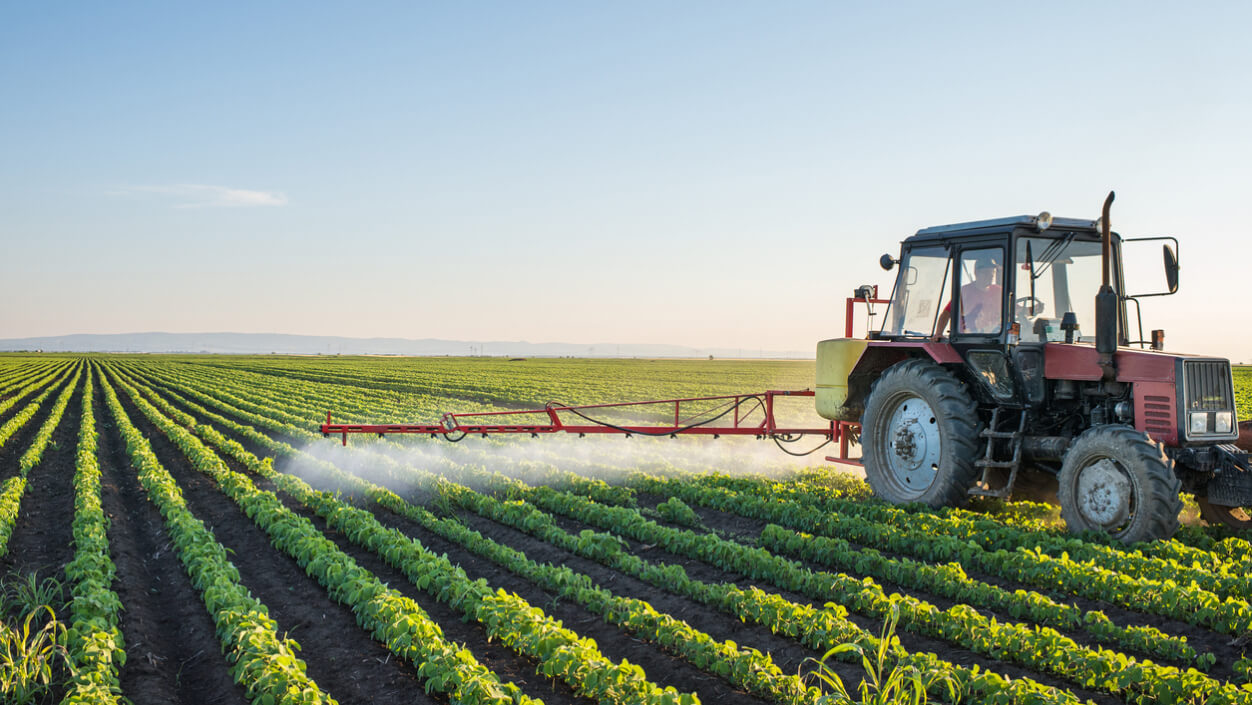
How Agricultural Workers Are Exposed to Asbestos
While the work that farmers do today is different from the work performed during the height of asbestos use in the mid-20th century, asbestos exposure remains a risk to farm workers.
Much of the equipment and machinery used on farms is known to contain asbestos products. Older farm buildings — including farmhouses, barns, silos, pens and sheds — are highly likely to contain asbestos construction materials. Asbestos cement pipes were commonly used as field drains on farmlands. Repair and maintenance of equipment, machinery and farm structures could expose farmers to asbestos.
Farmers may also be exposed to asbestos in contaminated vermiculite products or contaminated soil in areas of naturally occurring asbestos. Animal husbandry, digging up asbestos-laden soil, crop planting and maintenance with asbestos-contaminated vermiculite are other sources of exposure.
Newer sources of asbestos exposure on farms may come from machinery parts, including aftermarket brakes, brake linings, other vehicle friction materials and gaskets.
Download Our Asbestos Exposure Tips for Farmers
Help raise awareness by printing and sharing this handout, which covers helpful tips for preventing asbestos exposure in the agricultural industry. With more awareness, we can prevent harmful exposures and make worksites safer for everyone.
Asbestos Products Associated with Farming Occupations
Farmers have been exposed to different types of asbestos products in farming supplies, machinery, equipment, buildings and soil. Farming remains among the jobs that encounter asbestos frequently.
Asbestos-Contaminated Vermiculite
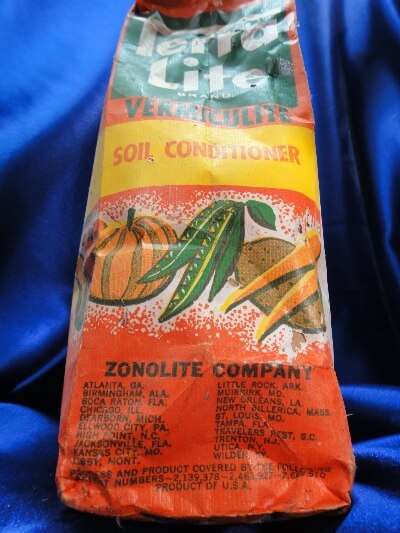
Vermiculite is a natural mineral that is like asbestos in that it is heat-resistant and a good insulator. Unlike asbestos, in its pure form it is not dangerous to human health. These minerals can form next to each other, which has led to asbestos contaminating many sources of vermiculite. Vermiculite has been used in a variety of products such as brake linings, fireproofing materials and potting soils.
An asbestos-contaminated vermiculite mine in Libby, Montana, is reported to have produced 80% of the world’s supply of vermiculite when it operated from the 1920s through 1990. A 1963 study of the Libby vermiculite found it contained 6.2% to 22.5% tremolite asbestos. It also contains other fibrous asbestiform minerals, including winchite and richterite. This contaminated vermiculite was used by farmers throughout the U.S. for agricultural and horticultural purposes.
In 2000, the U.S. Environmental Protection Agency conducted a study of vermiculite-containing gardening products in the U.S. Of the 38 vermiculite products tested, 17 of them contained asbestos. Of the 17 that tested positive for asbestos, 15 of them were soil mix products. The other two were vermiculite packing materials. Zonolite Chemical Packaging Vermiculite was labeled for use as a packaging material, but it was offered for sale in two different retail stores for home gardening use. The source of a laboratory packing material was unknown to the agency, but it tested positive for tremolite and actinolite asbestos. The agency recommends using vermiculite outdoors, keeping it damp to reduce dust and avoid bringing dusty clothing into the home.
The Zonolite brand also made a soil conditioner decades ago known as Terra Lite that contained asbestos-contaminated vermiculite from Libby.
| Product | Type of Asbestos |
|---|---|
| Ace Horticultural Grade Vermiculite | Actinolite |
| Ben Meadows Palmetto | Chrysotile |
| Black Gold Vermiculite | Chrysotile and Tremolite |
| Care Free Jiffy Mix | Actinolite and Chrysotile |
| Coles Cactus Mix | Actinolite |
| Coles Premium Vermiculite | Actinolite |
| Country Cottage Horticultural Vermiculite | Chrysotile |
| Earthgro’s Best Vermiculite | Actinolite and Tremolite |
| Green All Vermiculite | Actinolite |
| Hoffman’s African Violet Soil Mix | Actinolite and Chrysotile |
| Hoffman’s Vermiculite | Actinolite, Anthophyllite and Tremolite |
| Laboratory Packing Material | Actinolite and Tremolite |
| Pursell’s Sta-Green | Tremolite |
| Scotts Vermiculite | Actinolite |
| Schultz Horticultural Vermiculite | Actinolite |
| Schultz Seed Starter | Actinolite |
| Schundler Horticultural Vermiculite | Chrysotile |
| Therm-O-Rock Vermiculite | Tremolite |
| Whitney Farms Vermiculite | Tremolite |
| Whitney Farms African Violet Mix | Actinolite and Chrysotile |
| Zonolite Chemical Packaging Vermiculite | Actinolite and Tremolite |
Some of the farming purposes for vermiculite include:
- Animal feed
- Fertilizer
- Pesticides
- Seed encapsulation
- Soil conditioner
- Potting mix
- Root cuttings
- Seed germination
- Sowing composts

We will connect you to a qualified mesothelioma attorney who can help get you compensation to cover expenses.
Get Started TodayAsbestos in Soil
Farmers may also be exposed to asbestos in the soil of their fields. Asbestos in soil may occur naturally, or it may have been added to the soil as a vermiculite-based fertilizer or conditioning agent. Farms located near naturally occurring asbestos deposits may have the toxic mineral in their soil.
The overall risk of asbestos exposure to most farmers is relatively low. However, farmers who unknowingly work on lands contaminated with asbestos fibers may face a moderate to high risk of exposure.
Examples of asbestos-contaminated soil on farmland include:
- Farms located in flood zones of the Sumas River in Washington state near the Canadian border are at risk of asbestos soil contamination after flood events.
- Farmers with land located throughout California should be aware of the risk of asbestos soil contamination throughout the state. Forty-five of California’s 58 counties contain asbestos.
- Farmers working in southern Nevada and northwestern Arizona should be aware that they are working within an area of naturally occurring asbestos.
Asbestos in Farming Equipment and Machinery
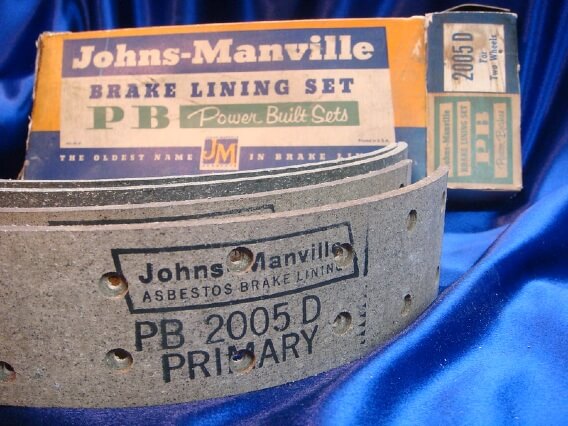
Asbestos friction materials, gaskets, insulation and heat panels were used in farming equipment because asbestos made these products heat resistant.
Farmers who replace brake linings on tractors are especially at risk of potentially harmful asbestos exposure. Dust-free, wet methods of brake replacement are recommended to limit exposure. Make sure to purchase asbestos-free brake lining replacements, which tend to cost more than traditional brake linings.
Asbestos products found on farming equipment or machinery include:
- Gaskets: Asbestos gaskets act as seals to prevent fires on machinery that generate heat.
- Brakes: Asbestos brakes and brake linings used on tractors and other equipment may still contain asbestos, even in new products.
- Clutches: Clutches for use on tractors are another friction material that continue to be made with asbestos.
- Under Spray: Spray-on asbestos coatings acted as a form of insulation for machinery.
- Insulation Panels: Asbestos-containing insulation panels were applied near engines and between seats and heat sources to contain heat.
- Hood Liners: The hood liners of tractors and other machinery were likely to contain asbestos because it is so heat resistant.
Asbestos in Farm Buildings
Most farms in the U.S. are likely to contain asbestos building materials. People seeking reclaimed barnwood from barns and farmhouses should be aware of the potential for asbestos contamination. The wood may contain traces of asbestos insulation, and it could bear asbestos-containing paint or varnish.
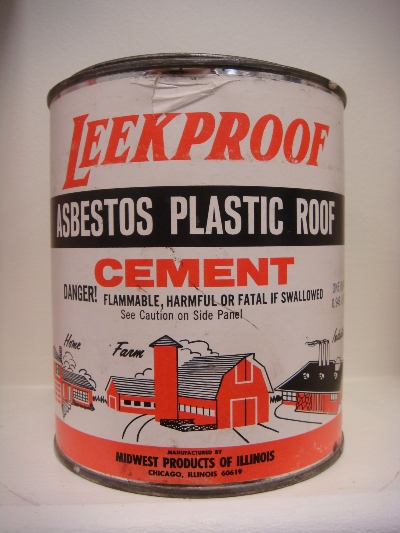
- Cement
Asbestos cement was used to make many different types of products and it was also used as a roofing material. For example, Leekproof Asbestos Plastic Roof Cement was marketed to farmers as a patching material and roofing adhesive.
- Shingles
Asbestos cement shingles were applied to the roofs of farmhouses to prevent fire damage.
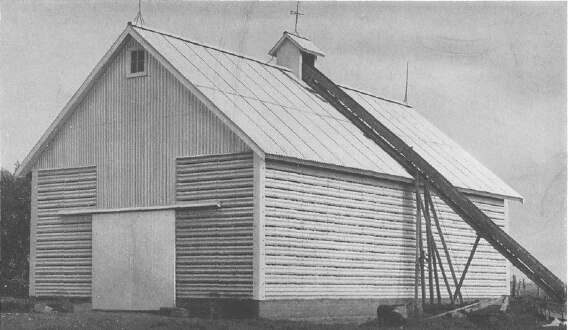
- Siding
Asbestos cement siding was applied to the sides of farmhouses and other farm buildings.
- Roofing Sheets
Corrugated asbestos cement sheets were used as a roofing material on various farm buildings.
- Building Partitions
Walls and partitions inside farm structures were made of asbestos to limit fire damage.

- Wallboards
Finished wall surfaces, including drywall, also contained asbestos for its strength, durability and fireproofing.
- Insulation Materials
Different types of asbestos insulation, including spray-on coatings, loose-fill insulation and wrap insulation, were used in buildings on farms. Farmers may have used Zonolite loose-fill insulation in attics of farmhouses and other buildings.
- Gutters
Asbestos cement gutters were a durable and long-lasting gutter solution around many farm structures.
- Exhaust Pipes
Exhaust pipes and flues on farm buildings were made of asbestos cement because they could handle high heat temperatures.
- Paint and Varnish
Asbestos-containing paint and varnish were used to paint barns and other farm buildings.
The U.S. Environmental Protection Agency requires farmers to notify local agencies if they plan to renovate or demolish buildings on a farm that contain a certain threshold of asbestos. The agency also requires specific safe practices for asbestos removal and disposal.
Farmers are also required to inform farm workers of areas that contain asbestos so workers can take precautions to avoid exposure.
Manufacturers Who Made Products Farmers Use
Dozens of asbestos manufacturers have made products that farmers encountered in horticultural supplies, building materials and equipment.
Some of the most notable manufacturers include:
- Dana Corporation: Dana manufactured asbestos gaskets that were used on tractors. It sold asbestos gaskets to John Deere for use on tractors.
- DeWitt Products: DeWitt made Liquid Asbestos Roof Coating and the product label recommended it for use on barns.
- John Deere: John Deere used asbestos parts on its tractors, including asbestos gaskets and brakes. The company never manufactured its own asbestos products. It outsourced them to other companies and installed them during the manufacturing process.
- Johns Manville: JM made a wide range of asbestos products that farmers used in buildings, including corrugated transite asbestos cement siding and roofing, insulation materials, wallboard and shingles. Old advertising materials show that JM directly marketed its asbestos building products to farmers as affordable and reliable construction materials. JM also made asbestos brake linings and clutch facings for farm tractors.
- Midwest Products of Illinois: This company made Leekproof Asbestos Plastic Roof Cement and marketed it directly to farmers.
- W.R. Grace: Grace’s Zonolite brand of vermiculite products were used by farmers for horticultural and insulation purposes.
Mesothelioma and Agricultural Workers
Research has documented the risk of asbestos exposure among farmers and cases of asbestos-related diseases. According to a 2022 report by the European Commission, over 70,000 workers died in 2019 from past exposure to asbestos.
- A 2016 study by the U.S. Geological Survey reported asbestos-contaminated sediment traveling from the Sumas River in Washington near the Canadian border to nearby farms amid flooding events. After floods recede, dusty conditions increase the risk of asbestos exposure for farm workers.
- A 2015 study reported residential proximity to naturally occurring asbestos in soil and rocks in California is directly related to an increased incidence of mesothelioma in farmers. The closer a farm or residence is to naturally occurring asbestos, the higher the risk of developing mesothelioma. For example, a town northeast of Sacramento, California, called El Dorado Hills is being monitored by the U.S. Environmental Protection Agency for its naturally occurring asbestos. Farms in and around the town may contain elevated levels of asbestos in the soil.
- Farms located in southern Nevada and northwestern Arizona are within an area of naturally occurring asbestos. According to a 2013 study published in Soil Science Society of America Journal, winds have transported asbestos throughout the region, leading to exposure in urban and rural settings.
- Farmers in the Basilicata region of southern Italy have higher rates of mesothelioma because of exposure to tremolite asbestos in the soil. A 2012 study showed agricultural activities increased exposure to asbestos fibers from the natural limit of two fibers per liter of air to 23.6 fibers per liter.
- According to a 1998 study on respiratory health hazards in agriculture, asbestos has long been a documented respiratory hazard to farmers. As early as 1967, researchers were investigating high rates of asbestosis among agricultural workers.
- A 1984 study of workers in an Ohio fertilizer plant using Libby vermiculite found an increased incidence of pulmonary changes typically caused by asbestos exposure, including pleural plaques, pleural thickening and pleural effusion. Samples of work areas in the plant revealed tremolite asbestos fibers. Farmers who used Libby vermiculite are also at risk of developing asbestos-related diseases.
Mesothelioma is a type of cancer that is primarily caused by asbestos exposure. Exposure to asbestos also causes other types of cancer, including lung, ovarian and laryngeal cancer. Asbestos exposure also causes a progressive and incurable pulmonary disease known as asbestosis.
If you’ve been diagnosed with an asbestos-related disease, it is in your best interest to find a doctor specializing in your specific diagnosis. Treatments are available to help people live longer with these conditions, and specialists know how to use them appropriately for your condition.

Get help paying for treatment and other expenses by accessing trust funds, grants and other options.
Access Funds NowCompensation for Farmers Exposed to Asbestos
Farmers have successfully sued manufacturers of asbestos products that caused them to develop related diseases. They’ve also filed workers’ compensation claims for mesothelioma.
- In 2019, a Missouri appeals panel ruled that a dairy farm’s procurement of workers’ compensation insurance acts as an acceptance of enhanced benefits for mesothelioma patients. Vincent Hegger died of mesothelioma and his son filed a workers’ compensation claim against his father’s former employer, Valley Farm Dairy Co., which was initially denied in 2015. The case proceeded all the way to the Missouri Supreme Court, which ruled in favor of Valley Farm.
- In 2017, 22 plaintiffs in asbestos lawsuits filed for consolidation of their cases in hopes of moving them quicker through the court system. One of the plaintiffs was Thomas Gallen, a mesothelioma patient claiming he was exposed to asbestos during his job as a farm worker and carpenter. The outcome of the consolidated cases is unpublished.
- In 2013, a South Carolina jury awarded $38 million to Lloyd Strom Garvin, a farm worker who developed testicular mesothelioma from exposure to asbestos products on his family farm.
If you’ve been diagnosed with an asbestos-related disease, you should find a qualified mesothelioma lawyer to handle your case. They have the training, resources and expertise to secure the most compensation for your claim. You may be eligible to file a personal injury lawsuit, asbestos trust fund claims or workers’ compensation claim.
If you’ve lost a loved one to mesothelioma, you may be eligible to file a wrongful death lawsuit to seek compensation for medical bills, lost wages and funeral expenses.
Recommended Reading


